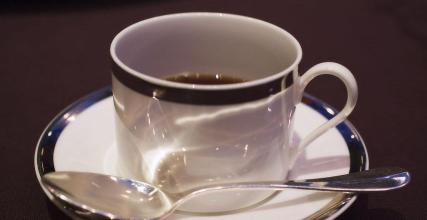Introduction to the characteristics of Coffee Variety of Coffee Manor in Xidamo Shachiso producing area
Ethiopia is the birthplace of coffee. Ethiopian coffee has the same deep cultural accumulation as Chinese tea.
The Sidamo producing area, which is 1400-2200 meters above sea level, is a famous boutique coffee area in southern Ethiopia, bordering Kenya. The washed Sidamo is light green, the beans are small, the growth oval, the fruit is full, the average quality is good, the smell is fragrant and mellow, a drop of taste, endless aftertaste, wild beauty, is considered to be a thorny rose in coffee.
Unlike ordinary African coffee, Sidamo has clear acidity, smooth taste and delicate floral smell. Washing Sidamo is elegant and playful. The entrance is mild and pleasant, with a strong taste impact with the bright lemon acid later on. The palate is unique and mellow, with a chic and pleasant aftertaste. The slowly rising finish contains chic sweetness. Coffee raw beans are grayish in some places thick and small in some places, soft and strong acidity, mellow, sweet and spicy, and is one of the courtyard coffees in the highlands of southern Ethiopia.
Dessert maker Wei Wei brought back coffee beans from the famous the cupping room during his trip to Hong Kong. Founded in 2011, the shop won the runner-up in the Hong Kong baristas competition, winning the top three in Hong Kong in 2012 and the Hong Kong champion and runner-up in 2013. In 2014, founder Kapo Chiu won the title of runner-up in WNC (World barista Competition). Ethiopian coffee is mostly tanned, but now it seems to have changed in recent years. The boutique coffee movement has made people's mouths more and more picky.
Less gossip, the aroma is obvious: according to Westerners, it is rose tea, but I think it is more like the taste of brown sugar and ginger soup, as well as the tonality of honey and oranges. This one is obviously purer than other Sidamo. Under the background of sour and sweet flavor, you can taste the flavor of candied fruit, flowers and chocolate. The palate is a little thin, but very smooth. The tail rhyme has the taste of milk, caramel and chocolate, all of which are typical of Ethiopia. The taste level is very complex but distinct. This is probably why it scored so high (and the price is so high) the following coffee beans are produced in Ethiopia: Yega Chefe, Sidamo, Harald, Iljashev, Dejima, Lim. It is common in China: Sidamo and Yega Xuefei. You said what aristocratic 90 + honey kiss, I am sorry, it may be that I am ill-informed, the impression of coffee beans should not be so marked, the general coffee bean packaging must be clearly marked with origin + manor + variety + number of items + grade. Examples of coffee beans I bought: Indonesia, Sumatra, Tiger Manor, 19 mesh Special Manning land area and condition: 1127127 square kilometers, almost three times the size of California (about 34 times the size of Taiwan), the territory is mountainous, due to frequent earthquakes, there are many fault longitudinal valleys in the plateau, and the topography forms a strong contrast. the desert is located on the southwest border (Kalahari) and north (Sahara), and near the coastline is a hot lowland of dwarf bushes, which is almost a plateau and high mountains in China. The average elevation is 2500-3000 meters, and the territory is connected by several high mountains. There is Lake Tana in the northwest plateau, which is the source of the Nile, from which the lake forms a semicircle flowing out of the mountain valley clockwise until it flows out of Sudan. The Sahara Desert covers part of the area and is rich in mineral reserves, known as the Horn of Africa.

Important Notice :
前街咖啡 FrontStreet Coffee has moved to new addredd:
FrontStreet Coffee Address: 315,Donghua East Road,GuangZhou
Tel:020 38364473
- Prev

Introduction of fine coffee in manor in the variety producing area of sun-dried Yega Shifeiwaka coffee
Although the Ethiopian Yirgacheffe coffee is petite, it is gentle and delicate and sweet. As the hometown of coffee, thousands of years of planting history and processing tradition in Ethiopia have created high-quality washed Arabica beans. Light baking has unique sweet aromas of lemon, flowers and honey, soft acidity and citrus flavors, fresh and bright on the palate. No.
- Next

Introduction to the Manor of Panamanian Kasha Coffee with its characteristics, flavor and taste
Species of Geisha were discovered in the Rose Summer Forest of Ethiopia in 1931 and sent to the Coffee Research Institute in Kenya, introduced to Uganda and Tanzania in 1936, introduced to Costa Rica in 1953, and Panama was introduced in the 1970s by Mr. Francico Serraxin of the Tonba Seven Farm Garden from CATIE in Costa Rica and began to grow Rose Summer Coffee. G
Related
- Detailed explanation of Jadeite planting Land in Panamanian Jadeite Manor introduction to the grading system of Jadeite competitive bidding, Red bid, Green bid and Rose Summer
- Story of Coffee planting in Brenka region of Costa Rica Stonehenge Manor anaerobic heavy honey treatment of flavor mouth
- What's on the barrel of Blue Mountain Coffee beans?
- Can American coffee also pull flowers? How to use hot American style to pull out a good-looking pattern?
- Can you make a cold extract with coffee beans? What is the right proportion for cold-extracted coffee formula?
- Indonesian PWN Gold Mandrine Coffee Origin Features Flavor How to Chong? Mandolin coffee is American.
- A brief introduction to the flavor characteristics of Brazilian yellow bourbon coffee beans
- What is the effect of different water quality on the flavor of cold-extracted coffee? What kind of water is best for brewing coffee?
- Why do you think of Rose Summer whenever you mention Panamanian coffee?
- Introduction to the characteristics of authentic blue mountain coffee bean producing areas? What is the CIB Coffee Authority in Jamaica?

